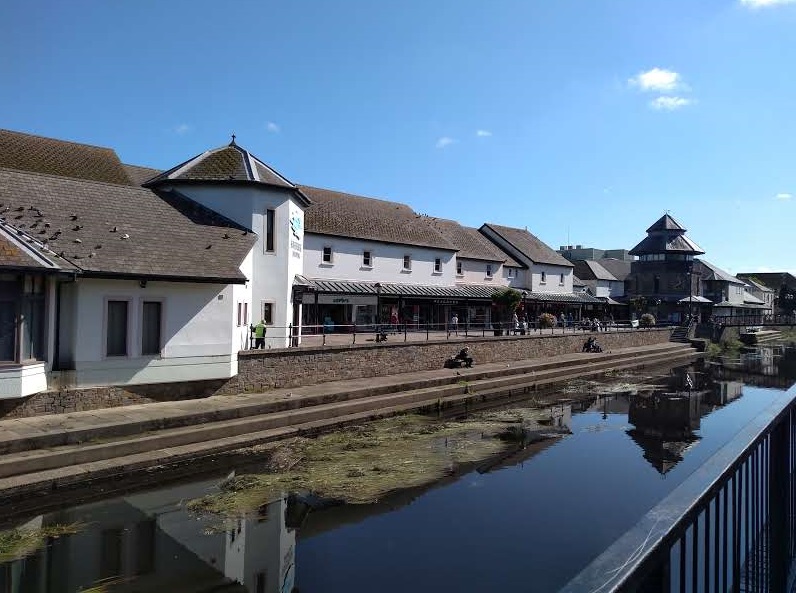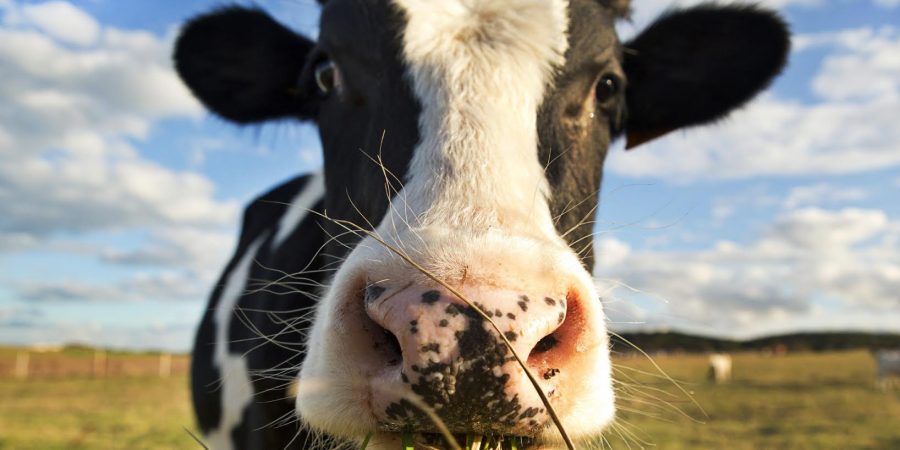News
New Eco Feature For Haverfordwest

Plans have been submitted for a ‘living green wall’ to be planted in the centre of Haverfordwest in a bid to enhance local biodiversity and wildlife.
The green wall would be situated alongside the river opposite Glan-yr-Afon, the town’s library and cultural centre, and planted with 25 species of native plants including ferns, grasses, flowers and wild herbs including basil, sage and clary.
As well as providing an important habitat for pollinators, the wall would also be an attractive natural feature in its own right, says Sara Morris, Pembrokeshire County Council’s Development Plans and Conservation Manager.
“This is a wonderful opportunity to re-introduce nature in the heart of Haverfordwest,” she said. “As with all planting, it will take some time for the plants to grow and flourish but given time it will look very attractive.”
The maintenance of the wall, which is scheduled for installation towards the end of October, would be carried out by a team of volunteers. New benches made from Welsh slate would also be installed to encourage residents and visitors to enjoy spending time in the area.
The green wall is part of the Cleddau Reaches partnership project which forms one of the priorities in the Haverfordwest Regeneration framework.
The Cleddau Reaches partners are Pembrokeshire County Council, the Bridge Meadow Trust, Haverfordwest Town Council, Natural Resources Wales (NRW) and Haverfordwest Kayak Club.
Pembrokeshire College and the Pembrokeshire Coast National Park Authority have also supported the project.
The aim is to improve and enhance the rights of way network in and around Haverfordwest and in particular, around the Western Cleddau, through several different inter-linked schemes.
Grant funding of approximately £250,000 has been provided by the NRW, Haverfordwest Town Council and the Landfill Disposals Tax Community Scheme.
Cllr Paul Miller, Cabinet Member for Economy, Tourism, Leisure and Culture, says the project’s focus on the river follows recognition that for too long, it has been an under-utilised resource despite being one of the town’s key natural assets.
“The Cleddau Reaches project brings together many ideas which the community has put forward over the last 20 years,” he said.
“As well as boosting biodiversity, the project forms part of the wider package of investments we are bringing forward to support Haverfordwest Town Centre.
“This administration is determined to revive the fortunes of the County Town, transforming Haverfordwest Town Centre from a traditional retail centre that’s being left behind into a vibrant leisure destination where residents and visitors alike want to spend their time.”
Some of the work currently taking place as part of the Cleddau Reaches project includes new riverbank paths near the Bridge Meadow with plans to create a new footbridge connecting to the Old Mill Grounds.
Other plans include creating habitats for sand-martins, otters and lampreys upriver, creating a trail linking up with the Town Council’s Priory Saltings project, and installing five interpretation boards along the route describing the flora, fauna and history of the local area.
The green wall planning application is currently registered with Pembrokeshire County Council for determination.
Crime
Prosecution delivers powerful closing speech in Christopher Phillips trial

Jury expected to retire shortly in Swansea Crown Court baby abuse case
THE TRIAL of Christopher Phillips, accused of inflicting catastrophic injuries on a 10-week-old baby in Haverfordwest, moved into its final stages today (Dec 5) as the last evidence was heard and the prosecution delivered a forceful closing speech at Swansea Crown Court.
Phillips, 34, of Kiln Park in Burton, is charged with causing serious physical and sexual harm to Baby C in January 2021. The infant was taken by ambulance to Glangwili Hospital in the early hours of January 24 after suffering life-threatening internal injuries.
The baby’s mother faces separate charges of allowing serious physical harm and child cruelty for allegedly failing to protect her child.
Final evidence presented
The court resumed at 11:09am, when the prosecution submitted its final exhibit: a detailed timeline reconstructed from Phillips’ mobile phone data, charting his visits to the mother’s flat in Haverfordwest.
Prosecutor Caroline Rees KC highlighted the distances between Phillips’ home, the mother’s address and Glangwili Hospital, telling the jury that the timings were central to understanding the sequence of events that night.
This concluded the evidential phase of the trial.
Judge issues legal directions
Late this morning (Friday, Dec 5) Judge Paul Thomas KC delivered his directions to the jury, outlining the legal tests required for convictions against both Phillips and the child’s mother. He reminded jurors to consider each charge separately and to apply the law only to the evidence they had heard.
Prosecution closing speech
In her closing address at early this afternoon, Rees KC told the jury that 10-week-old Baby C had been a “happy little baby” who showed “no signs of distress” in a video recorded by his father on January 23, 2021.
She said that within hours, by the early morning of January 24, the infant was in hospital with what she described as a “gaping tear in his anus”.
Rees KC argued that the evidence of who caused the injuries “points in one way – towards Christopher Phillips”.
Turning to the baby’s mother, she said the prosecution’s case was that she was “not without blame”, telling the jury that the mother had “failed in her duty to keep her baby safe”.
“She at the very least ought to have realised that her baby was at serious risk from the man she brought into her home,” Rees KC said. “She didn’t take any steps to keep that baby safe. She prioritised Christopher Phillips over her own child.”
Jury expected to retire
No defence closing speech was delivered today and no further evidence is scheduled. The jury is expected to retire shortly to begin its deliberations.
The case continues at Swansea Crown Court.
Farming
FUW urges government action as plunging dairy prices threaten family farms

THE FARMER’s UNION OF WALES has sounded the alarm over a sharp and sustained collapse in dairy prices, warning that the situation is placing intolerable pressure on family farms already grappling with regulatory change, rising costs and wider economic uncertainty.
The Union convened an emergency meeting of its Animal Health and Dairy Committee last week to assess the scale of the crisis. Representatives from across Wales reported widespread anxiety, with many members seeing milk prices fall dramatically through the autumn. Processors are now signalling further cuts in early 2026, while commodity markets offer little sign of stability heading into spring.
Farmers, fearful of jeopardising commercial relationships, have approached the FUW confidentially to express grave concern about projected milk payments for the coming months. Many say the offers being made will fall far below the cost of production.
Average milk prices are forecast at just 30–35 pence per litre, against estimated production costs of 39–44 pence per litre (Kite Consulting). On current trajectories, the FUW warns a typical Welsh dairy farm could lose thousands of pounds per month for as long as the downturn persists.
Following its committee meeting, the Union raised the matter directly with Deputy First Minister Huw Irranca-Davies MS during talks in Cardiff on Wednesday, December 3. Officials stressed the immediate threat facing family-run dairy farms and called for urgent consideration of government support to prevent long-term damage to the sector.
Gerwyn Williams, Chair of the FUW Animal Health and Dairy Committee, said the pace of the price crash was “unprecedented”.
“Farmers are facing an impossible situation where input costs remain high while the value of their product plummets. The viability of many family farms is now at serious risk. We need immediate assurances that this crisis is being treated with the urgency it deserves.
“Some can weather a short storm, but rumours that this could continue into summer 2026 will see businesses shut. These modest family farms have already invested heavily to meet regulatory requirements. Cuts on this scale will severely impact their ability to service repayments.”
FUW Deputy President Dai Miles warned that the consequences extend far beyond farm gates.
“Dairy farming underpins thousands of jobs in Wales and is central to the economic, social and environmental fabric of rural communities. When prices fall this sharply, it isn’t just farmers who suffer — local businesses, services and entire communities feel the impact.
“We have made it clear to the Deputy First Minister that government must work with the industry to provide immediate stability and a long-term resilience plan.”
The FUW says it will continue to work with the Welsh Government, processors and supply-chain partners to seek solutions and secure fair, sustainable prices for producers.
Community
Haverfordwest’s first memory tree brings community together this Christmas

Spud Box is delighted to launch a brand-new festive initiative for the people of Pembrokeshire – Haverfordwest’s first Memory Tree, now open to the public at our premises.
The idea, inspired by Drew from The Big Pembs Panto, invites members of the community to write and hang personal messages on the tree. These can be tributes to loved ones, cherished memories, or simple Christmas wishes.

The project has been created to give people a meaningful way to connect during the festive season. All materials – including paper, plastic pockets and ribbon – are provided free of charge. Visitors are also welcome to enjoy complimentary hot drinks, kindly supplied by Connect: Pembrokeshire, along with mince pies donated by Brakes.
Anyone who prefers to create their message at home can bring it in, and the team will be happy to help attach it to the tree.
Donations are being encouraged in support of Sandy Bear Children’s Bereavement Charity, making the Memory Tree both a reflective and charitable community event.
The tree itself looks spectacular thanks to Sion from DSR Batteries, who supplied the lighting. The project has also received generous support from Marty at Sandy Bear Children’s Bereavement Charity and Pure West Radio. Spud Box welcomes other community groups or organisations who wish to get involved.
-

 Crime3 days ago
Crime3 days agoDefendant denies using Sudocrem-covered finger to assault two-month-old baby
-

 Crime2 days ago
Crime2 days agoPembroke rape investigation dropped – one suspect now facing deportation
-

 Crime7 days ago
Crime7 days agoMan denies causing baby’s injuries as police interviews read to jury
-

 News2 days ago
News2 days agoBaby C trial: Mother breaks down in tears in the witness box
-

 Crime3 days ago
Crime3 days agoLifeboat crew member forced to stand down after being assaulted at Milford pub
-

 Crime3 days ago
Crime3 days agoDefendant denies causing injuries to two-month-old baby
-

 Crime3 days ago
Crime3 days agoPembrokeshire haven master admits endangering life after speedboat collision
-

 Crime1 day ago
Crime1 day agoMother admits “terrible idea” to let new partner change her baby’s nappies alone



















